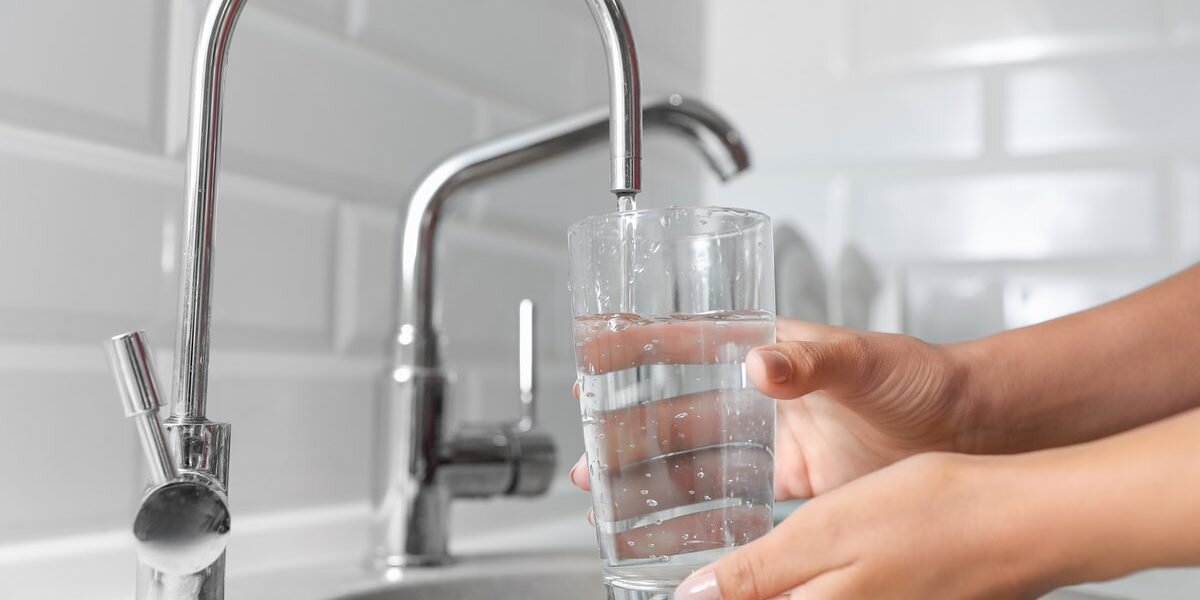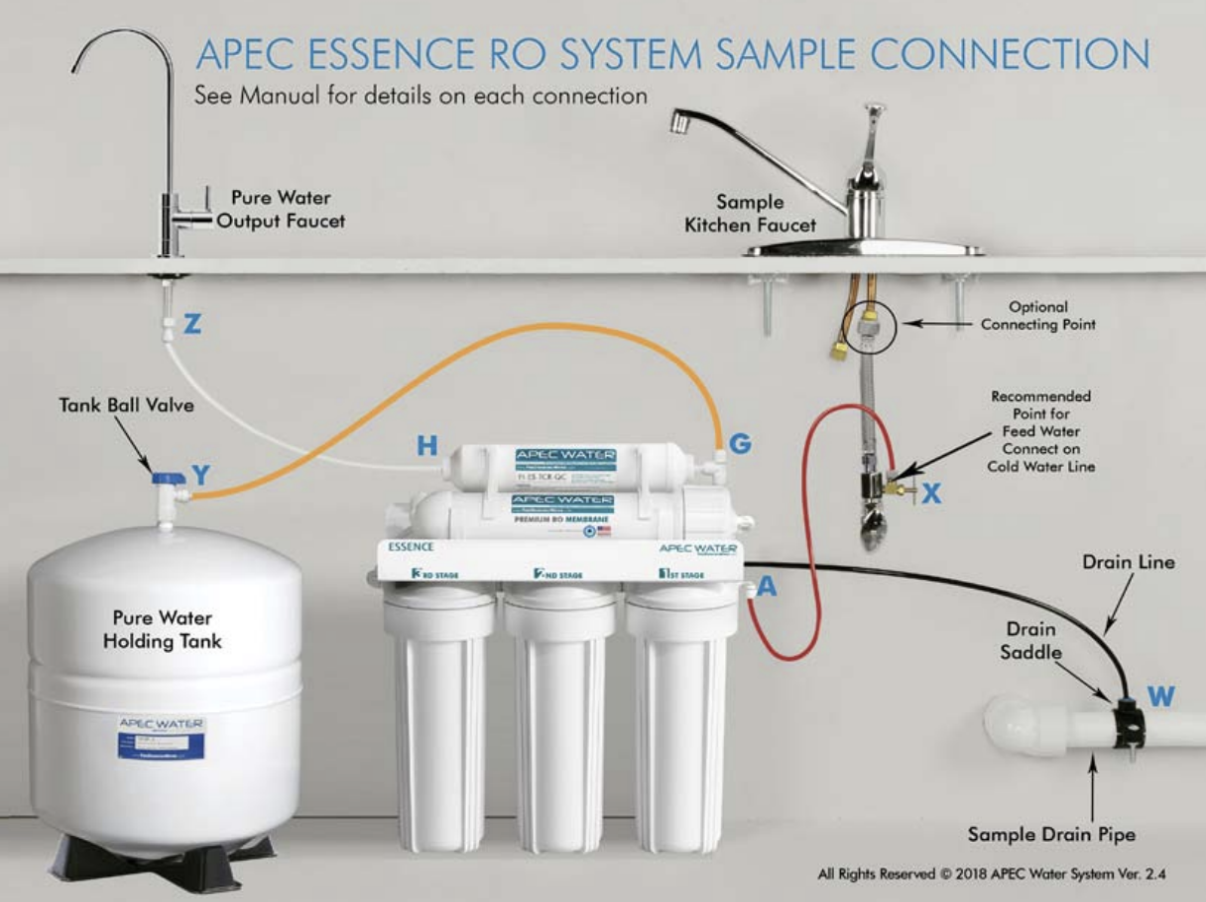DIY Project: Water Filtration at Home
At 33 Buckets, we focus on developing clean water solutions for underserved communities around the world (view our projects here). Our knowledge in filtration is transferable to home filtration systems so we thought with this post that we would share information about at home water filtration systems, especially for those that currently drink bottled water.
Consumption of bottled water is increasing every year. Annual consumption of US residents in 2015 was 11.7 million gallons, and has increased more than 47% since 2005 [1]. Bottled water consumption has continued to increase today around the world, despite at home filtration being easier than ever. Fridge filters, Brita filters , and various sink attachments provide many options to choose from; however, many people still choose bottled water because these filters might not address the taste of their tap water.
In this article, we share tips on how you can install your own RO system under your kitchen sink that will remove many common taste issues, so you can save money and the planet. If you only turn to bottled water for convenience when you’re out of the house, consider purchasing one of our 33 Buckets reusable water bottles.
Installing a Reverse Osmosis (RO) System is not as difficult as you might think!
Water is a fundamental need for your health and it is important to consume it in large quantities every day. It has been estimated that, on average, people should drink 12.5 cups or 3.2 liters per day [2]. Keep in mind that you may need even more depending on your level of exercise, the weather, and/or your health condition.
That is a lot of water to consume on a daily basis! Although your tap water is likely treated, and is safe to consume, many do not enjoy the taste or smell. This is likely from the hardness caused by dissolved solids and heavy metals, or the chemical taste from residual chlorine used to disinfect tap water. The exact issues vary depending on where you live and your water source. Alternatively, Brita filters can improve the taste of water through the removal of chlorine, but it does little for heavy metals and dissolved solids. They can be a hassle to use, as you have to refill them daily to meet your water consumption needs.
Bottled Water Considerations
Many people turn to bottled water for the taste and the perception that tap water is unsafe. But unfortunately bottled water is highly unsustainable, more expensive, and may not actually be safer to drink. Although bottled waters may be perceived as a “safer” option to tap water, their source and chemical characteristics vary widely, and are not necessarily better or different than your tap water [3]. Bottled water has been found to be over 30 times more expensive than tap water [5], and despite the marketing that might make you think your water comes from a far away spring -- 25 to 40% of bottled water is filled directly from municipal systems [6]! Additionally, it has been estimated that only 14% of single-use bottles get recycled, and the 86% of bottles sent to landfills take over 1,000 years to biodegrade [6].
Introducing: RO Filtration Systems
If you are currently a bottled water consumer and have tried other alternatives without success, an RO (reverse osmosis) system might be a great solution. They are relatively easy to install (~1-2 hours), and remove almost everything from the water including heavy metals and dissolved solids. Installing your RO system is considerably more sustainable, convenient, and effective than using bottled water. If these reasons are not convincing enough, installing an RO system can also save you money if you are currently purchasing bottled water.
RO filtration is not a method we usually use in our projects abroad. It is more expensive than other water filtration options--however, it is one of the most effective ways to filter water. Maybe even too effective -- keep in mind that since RO systems remove just about everything from your water, it also removes healthy minerals your body needs. We recommend adding trace minerals so that you can still experience the health benefits of having these minerals in your water. If you do not add trace minerals, you may want to consider taking a dietary supplement to ensure you are still getting adequate Magnesium and Calcium.
Buying an RO System
There are several different options available when it comes to purchasing an RO system for your home. In this article, we will be focusing on filters you can place under your kitchen sink. We like the APEC RO System at $199 because it has five stages of filtration, is cheaper to maintain than competitors, and has a high output (50 GPD). The RO system comes with 5 filters, fittings, and a faucet.
It is recommended you replace the pre-filters (two sediment filters and one carbon block) every 6 months, which will cost you about $27. The RO filter and post-carbon filter only need to be replaced every 2-4 years depending on your usage and water quality. You can buy a complete set of replacement filters for about $67. You should conservatively expect to spend $54 most years to maintain your system and then $94 the year you replace all of the filters. (The average American spends 100 dollars per year on bottled water [7], and this price only goes up if you have a family).
RO filtration is one of the most effective methods of removing contaminants from water--it removes 95-99% of water contaminants including chlorine, sodium, arsenic, lead, nitrates, other heavy metals.
Stage 1 (sediment filter) removes dust, large particles, and rust.
Stage 2 and 3 (carbon block filters) remove chlorine, chemicals, and odor.
Stage 3 (RO membrane) removes all particles down to 0.0001 microns (this is really tiny---for some perspective a cross section of human hair is 50 microns). This includes chemicals, salts, heavy metals, and viruses. The water is then stored in a pressurized storage tank, and must pass through the final carbon post-filter before it reaches your faucet.
Please note that although RO Systems are clearly very effective, they also waste a lot of water. For every gallon of filtered RO water, about 4 gallons of water are wasted. RO Systems might not be as suitable if you live in an area with water scarcity concerns.
Figure 1: A visual representation of the primary stages of an RO system (from World of Water Filter)
Installing an RO filter
Don’t be intimated - check out Mark and Susan’s DIY RO system! Simple, yet effective.
Installing an RO system is relatively simple, intuitive project, but there are a few things to consider. You will need to have a hole in your countertop for the faucet. The simplest, most straightforward method is to just remove your soap dispenser and use this hole as seen in Figure 2. An alternative is to drill a hole through your granite. There are online resources available that guide you through this process and you will need a drill bit.
You will also need a few tools on hand, including:
A drill
1/4” drill bit (for the waste line),
5/8”, 9/16” open-end wrench, or adjustable wrench
Phillips screwdriver
Teflon tape
Figure 2: Soap dispenser that can be replaced with RO system faucet
Figure 3: Connecting RO system to the supply line (from APEC installation guide)
You will need to connect your RO system to your water line. This involves using a T-fitting to split your cold water supply line under your sink as seen in Figure 3. This is a pretty straightforward process that the RO system instructions will guide you through.
You will also need to connect to connect your RO system to a drain line so the contaminants and unused water have a place to drain. This involves drilling a ¼” hole in your drain line and then installing a clamp as seen in Figure 4.
You will also need to connect to connect your RO system to a drain line so the contaminants and unused water have a place to drain. This involves drilling a ¼” hole in your drain line and then installing a clamp as seen in Figure 4.
Figure 4: Connecting RO system to drain line (from APEC installation guide)
Figure 5: Quick-connect fittings make installing the RO system very easy (from APEC installation guide)
After making all of the connections, your RO system should look like the sample in Figure 6. Keep in mind that you will need ample room under your sink.
Overall, installing an RO system is not as difficult as you might think and will allow you to have refreshing filtered water at your disposal. Give it a try!
References
[1] Rodwan, John. “U.S. AND INTERNATIONAL DEVELOPMENTS AND
STATISTICS.” Bottledwater.org, Beverage Marketing, 2015,
www.bottledwater.org/public/BWR_Jul-Aug_2016_BMC%202015%20bottled
%20water%20stat%20article.pdf#overlay-context=economics/industry-stati
stics.
[2] Institute of Medicine. 2005. Dietary Reference Intakes for Water, Potassium, Sodium,
Chloride, and Sulfate. Washington, DC: The National Academies Press.
https://doi.org/10.17226/10925.
[3] Arve Misund, Bjørn Frengstad, Ulrich Siewers, Clemens Reimann, Variation of 66
elements in European bottled mineral waters, Science of The Total Environment,
Volumes 243–244, 1999, Pages 21-41, ISSN 0048-9697, https://doi.org/10.1016/S0048-9697(99)00307-1.
[4] “Reasons to Avoid Bottled Water.” Sustainability at Harvard, 13 Nov. 2013,
green.harvard.edu/tools-resources/green-tip/reasons-avoid-bottled-water.
[5] Natural Resources Defense Council, ‘Bottled Water: Pure Drink or Pure Hype?’,
www.nrdc.org/water/drinking/nbw.asp
[6] “Earth Policy Institute – Building a Sustainable Future: Home.” Earth Policy Institute
– Building a Sustainable Future | Home, www.earth-policy.org/.
[7] “Bottle Water Expense.” The Water Project, thewaterproject.org/bottled-water/bottled_water_resources.









